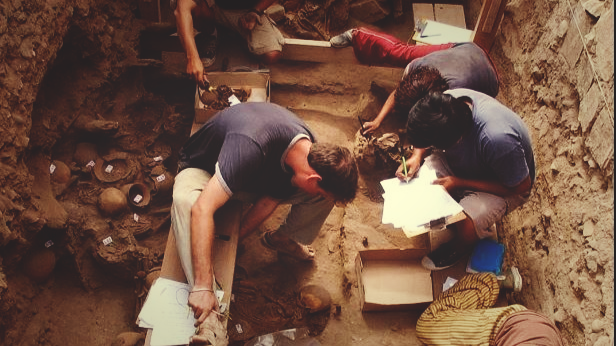Unearthing the Foundations of Workplace Expectations: Leadership, Followership, and the Archaeology of a Strengths-Based Culture

The modern workplace is much like an archaeological site, rich with layers of expectations and performances waiting to be uncovered. Just as archaeologists sift through strata to understand the history of a site, leaders and followers must carefully examine the layers of expectations within their teams and organizational culture to foster environments that promote both high performance and employee wellbeing.
Digging Through the Layers of Expectations
Expectations in the workplace are like the sedimentary layers of an ancient site—built up over time from various sources such as leaders, peers, and customers. These expectations can be the bedrock of strong performance or the buried traps that lead to stress and burnout.
An article I recently explored sheds light on the dual nature of these expectations - adding my spin with archaeology:
For Leaders: Leaders are the master archaeologists, setting the excavation plans and guiding their teams through the dig. They unearth the goals and objectives, providing the necessary tools and support to their teams. However, if they misjudge the site—setting unrealistic goals or ignoring the wellbeing of their team—they risk destabilizing the entire structure.
For Followers: Employees, or followers, are the field archaeologists, carefully excavating their own sections of the site. They must interpret the layers of expectations set by leaders and peers. High self-expectations can drive meticulous work, but without a supportive framework, these expectations can also lead to overwhelming pressure. Followers contribute to the discovery and preservation of the team’s culture, making their engagement crucial for unearthing the site's full potential.
Unearthing the Dynamics of Teams and Organizational Culture
Teams are the dig sites of an organization, where the true treasures—or pitfalls—of performance are found. A team culture that encourages collaboration, trust, and mutual support is like a well-organized dig, where every member knows their role and works in harmony.
But a toxic culture, riddled with competition and unclear expectations, can be as chaotic as an unplanned excavation, leading to lost artifacts (or in this case, lost productivity and morale).
Organizational culture, like the broader landscape surrounding a dig site, sets the context within which teams operate. A culture that demands results at any cost can lead to a rapid but destructive excavation, where valuable artifacts are damaged or lost. Conversely, a culture that values careful, thoughtful excavation—focused on long-term gains rather than short-term wins—can preserve the integrity of both the site and the team, leading to sustainable performance and long-lasting success.
Using CliftonStrengths to Map the Site and Guide the Dig
Just as archaeologists use tools and maps to guide their digs, organizations can use the CliftonStrengths framework to navigate the complex terrain of workplace expectations and performance. This strengths-based approach helps to identify and leverage the unique talents of each individual, ensuring that every team member is working in the right layer of the site.
Here’s how a strengths-based culture can serve as your excavation guide:
Mapping Individual Talents: CliftonStrengths is like a detailed site map, helping employees identify their unique strengths, which are the most valuable artifacts in the workplace. This awareness allows individuals to focus their energy where they can be most effective, reducing the strain of unrealistic expectations and enhancing job satisfaction.
Coordinating the Dig Team: Understanding the strengths of each team member allows leaders to assign roles that align with individual talents, much like placing an archaeologist with expertise in pottery at the right section of a dig. This alignment improves the efficiency of the excavation (or workplace performance) and fosters a collaborative environment where each member’s contributions are valued and integrated.
Preserving the Cultural Integrity: A strengths-based approach shifts the focus from what’s missing to what’s already valuable in the team’s makeup. This positive perspective helps to preserve the cultural integrity of the organization, creating a workplace where employees feel valued and motivated to contribute to the collective dig.
Conclusion
In the workplace, as in archaeology, success lies in carefully unearthing the layers of expectations and performance. Leaders and followers must work together to excavate the site, revealing the treasures of a strong, supportive culture while avoiding the pitfalls of stress and burnout. By adopting a strengths-based approach like CliftonStrengths, organizations can ensure that every dig is productive, every artifact is preserved, and every team member is engaged in the excavation of their full potential.
Reference: R K. Smollan & S K. Mooney (2024) The bright side and dark side of performance expectations: the role of organizational culture and the impact on employee performance and wellbeing, International Studies of Management & Organization, 54:3, 218-237
This article was first published as a LinkedIn Article on Aug 12 2024.
